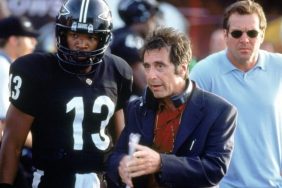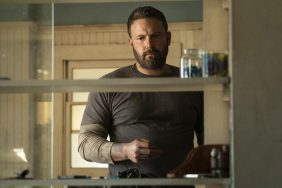おはよう、クラス。Welcome back to CraveOnline‘s Free Film School, the bestest school there ever was. Why is it the bestest? Because I’ll give you a passing grade, even if you attend sporadically, eat in class, only peruse my lectures with a mild interest, and don’t do any of the homework. Although you might benefit from doing the homework assignments.
This week, we’re going to be doing another brief genre study (in the past we’ve discussed genres as wide-ranging as zombie movies to film noir), tackling (perhaps literally) the phenomenon of sports on film.
Sports movies have been a staple of cinema for as long as there has been cinema. As far back as the days of silent film, sporting events have often served as dramatic cruxes for all kinds of stories. It’s no wonder why: Sports are inherently dramatic. Two teams or several athletes gather to compete, to best one another in a competition of mental skill and physical prowess. It doesn’t really matter what the sport is – from football to soccer to baseball to track to golf to curling to sumo wrestling to rollerball – it’s going to be tense and exciting to watch people spar.

Screenwriting teachers will often hammer away at the word “conflict,” insisting that every screenplay have some sort of challenge for the protagonist(s). Usually said cinematic conflict manifests as an emotional hurdle or an inevitable social confrontation, but sometimes that conflict is as simple as two guys who wanna fight. And what better way to manufacture a conflict than by putting the protagonist in a sporting event of some kind? It’s the simplest and most direct form of drama imaginable. Why invent a reason for two people to fight in the streets, when you can just make them both athletes and have them fight on a field/boxing ring/baseball diamond/Real Steel match?
Here’s the curious thing about sports movies: They are still alluring, even though they are rarely clever or complex. Whether they’re based on real-life sporting events, or entirely fictional, sports movies always tend to stick very, very closely to a long tradition of broad dramatic archetypes. The protagonist is either an eager newbie, just learning his/her craft for the first time (think of Lucas), or a washed-up has-been/never-was who has to rise above and prove himself/herself to the world (think of Rocky Balboa). Sometimes it’s a ragtag bunch of misfits who has never been good, but who will find salvation at the hands of not bickering (The Bad News Bears, The Mighty Ducks, etc. etc. etc.). Their opponent is either a string of increasingly powerful athletes (think of Million Dollar Baby), or a single vaguely evil opponent (think of the Cobra Kai from The Karate Kid).

We know the types so well, and we’ve seen the story a hundred times. And it all, of course, boils down to what screenwriters call The Big Fight. The Big Fight doesn’t necessarily have to be a literal fight, but it’s shorthand for pinning all the film’s dramatic catharses on a final, late-in-the-film sporting event, where the protagonist gets to show his/her mettle, and all the drama will be resolved.
Big Fights, to reiterate, are simple yet satisfying. Are they lazy screenwriting? Perhaps. Do they work? Yes. If a sporting event is filmed dramatically enough, you actually become involved in the game. I know many film critics who actively eschew the world of organized sporting events (we’re all snotty, nerdy “feelm” guys, after all), but who will still shed a tear for Rudy, for Lucas, for Rocky, for The Babe, for just about every single ghost in Field of Dreams.








